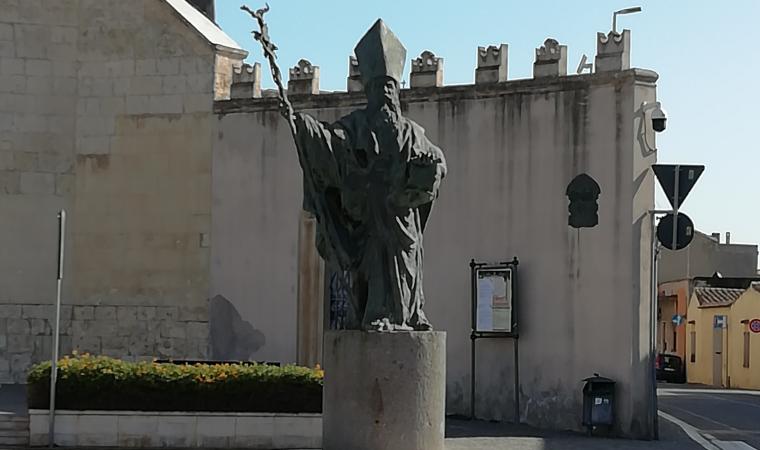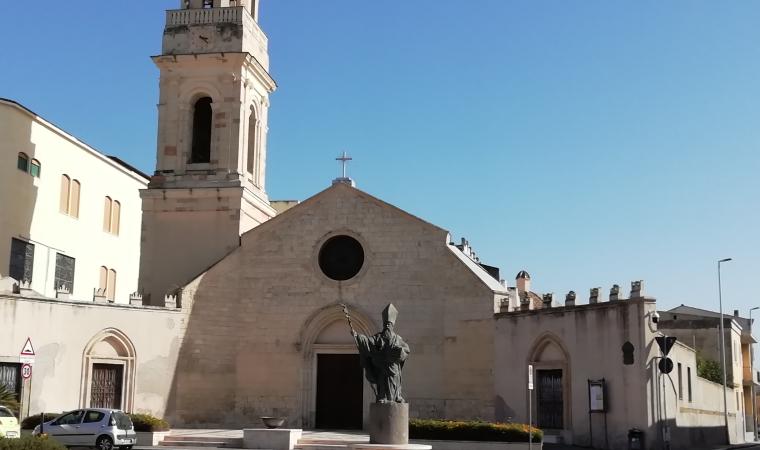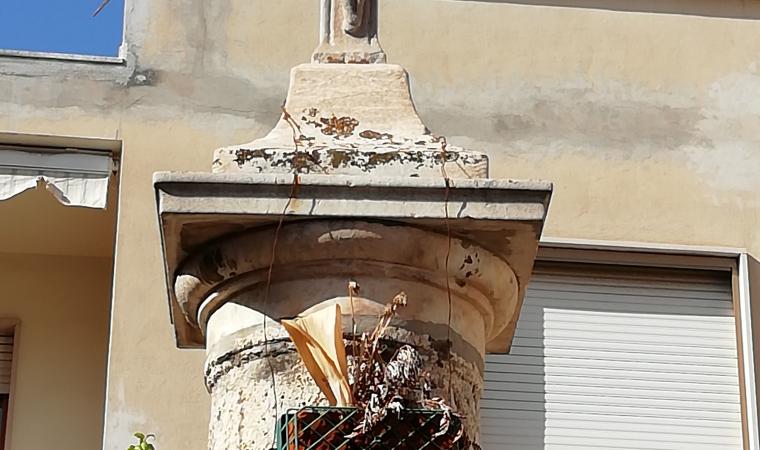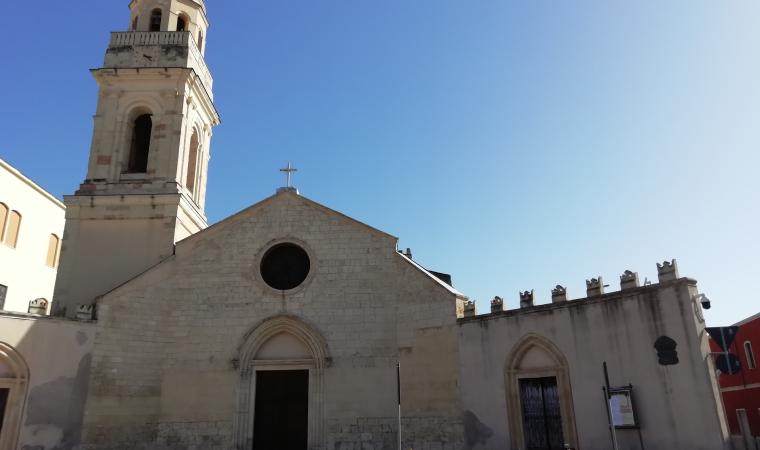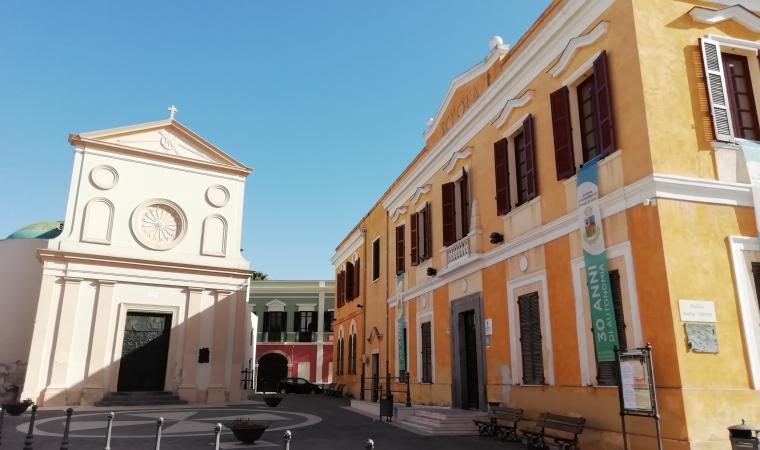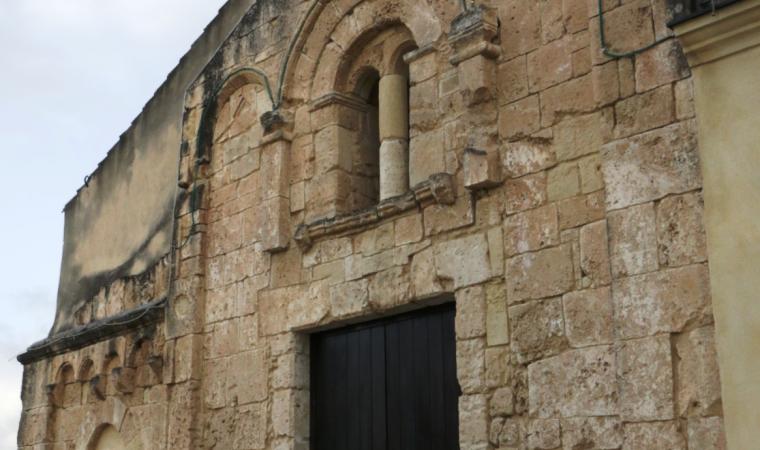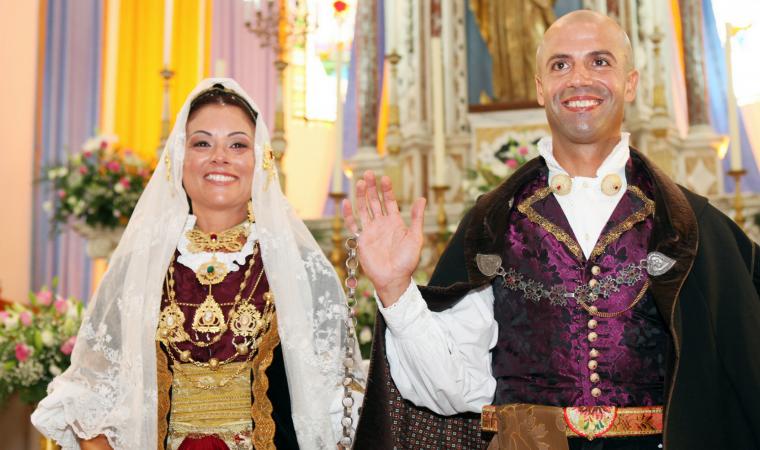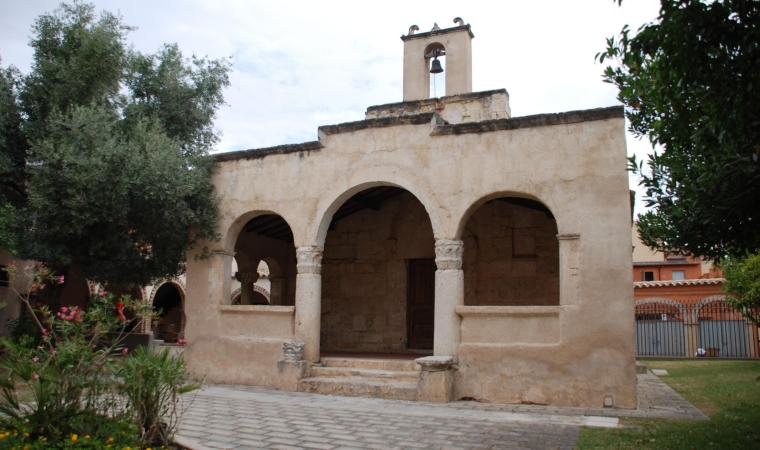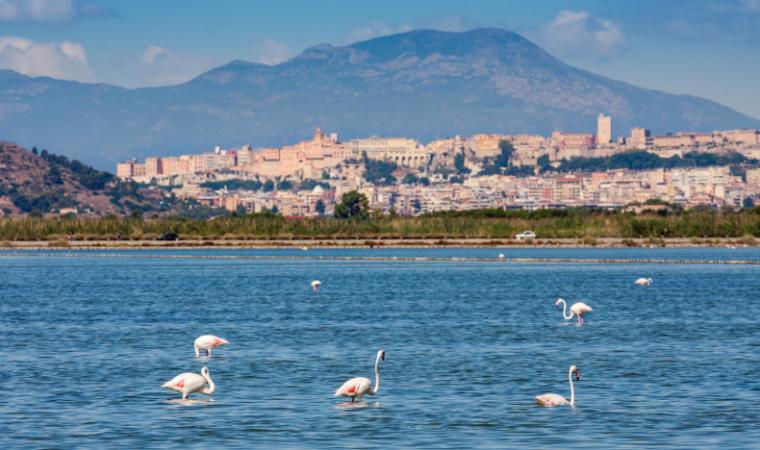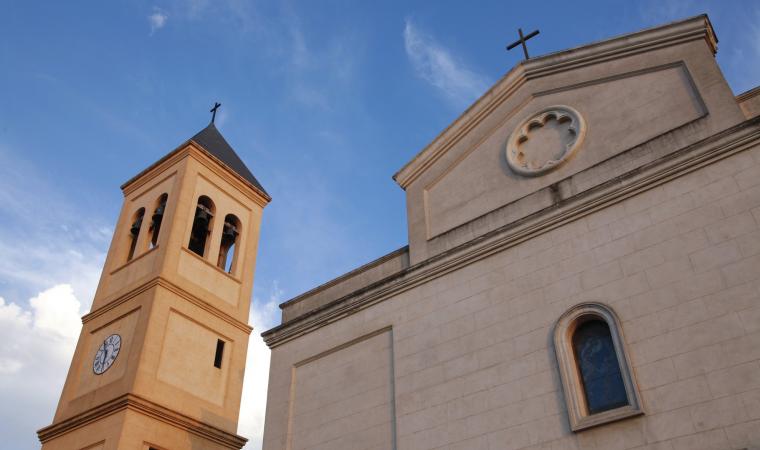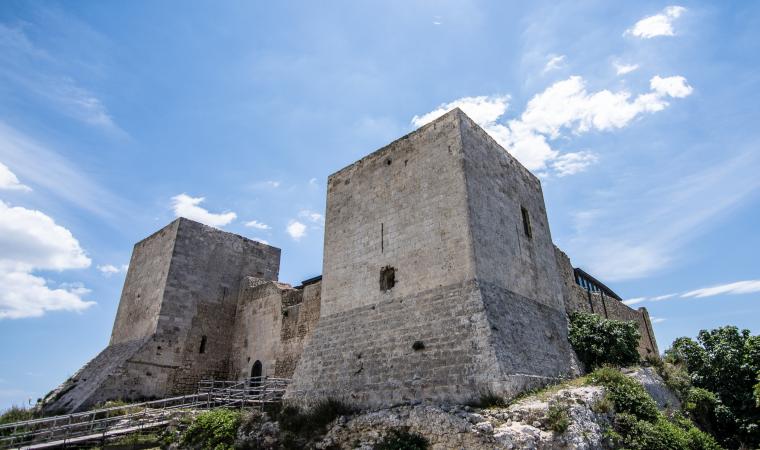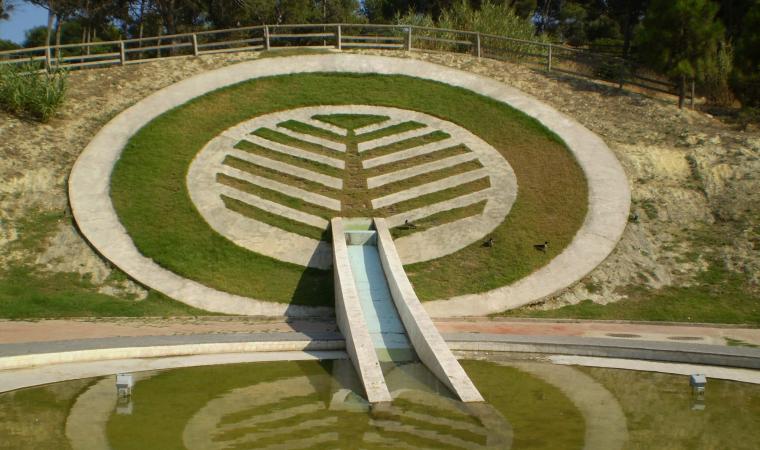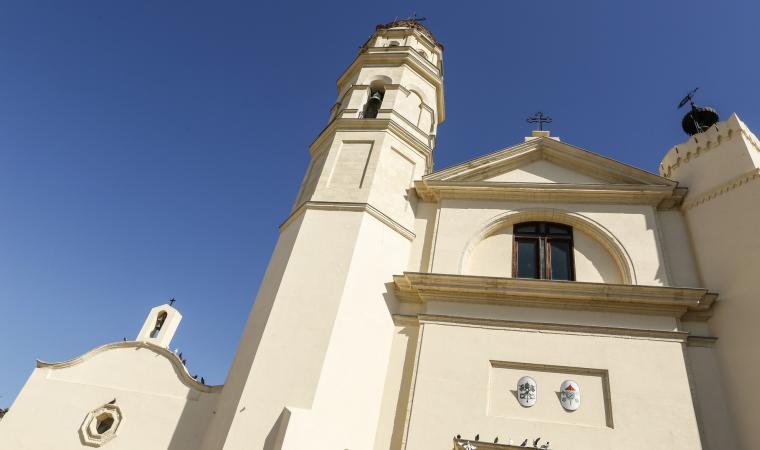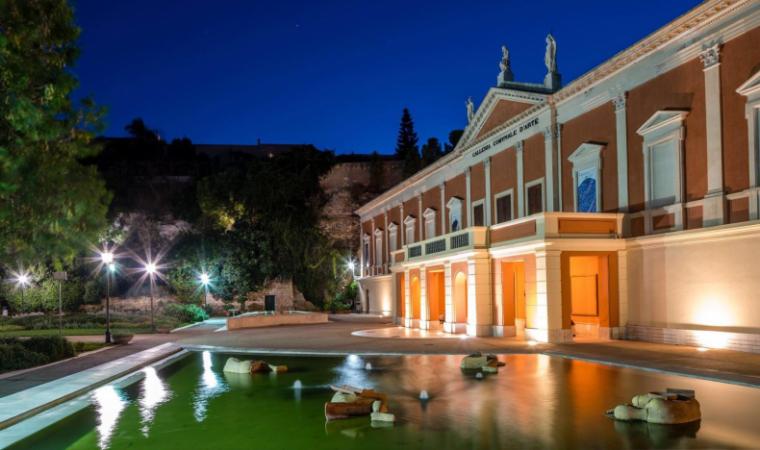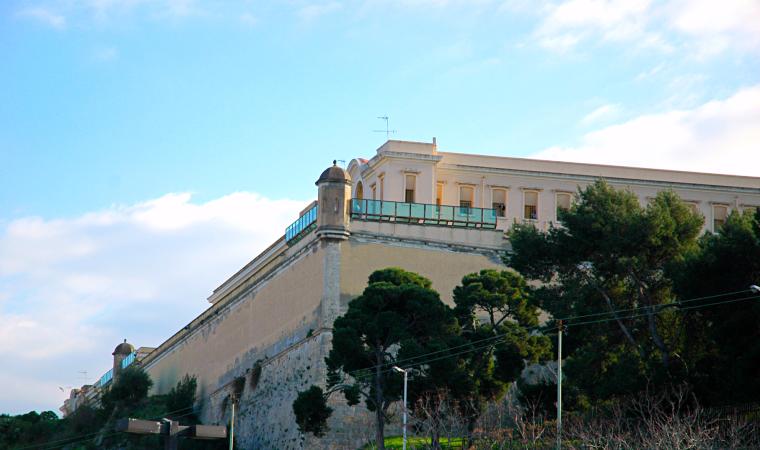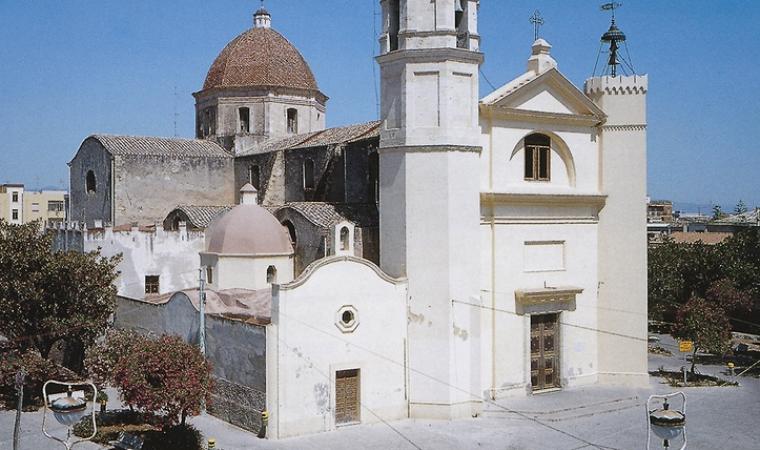Its origins can be found in two sources, one from 1654, in which construction had not yet begun, and the other from 1716, in which the building of two side walls was commissioned. It was in this period of time that the Church of Sant’Ambrogio was built in Pauli Pirri, a village that, in 1881, took on its current name of Monserrato. Today, its outline characterises the historic centre of the little town, on the outskirts of Cagliari, where Saint Ambrose is the patron saint, celebrated on 7 December. The architectural style is Gothic-Catalan, but when you observe the façade you will notice several unusual elements: an original double sloping roof and the battlements that decorate the lateral buttresses placed diagonally with respect to the main building. Above the portal, there is a pointed arch with an eyebrow element and an oculus, characteristic elements of Gothic architecture. The bell tower stands to the left of the entrance and was rebuilt in the late 19th century after the collapse of the original structure.
Inside, there is a single-nave layout with a barrel vault, onto which six side chapels open up through pointed arches, with dividing walls that were opened in recent times, creating the effect of side naves. In the chapel of the presbytery, you will see a star-shaped cross vault, with five distinctive hanging gems. On the sides of the triumphal arch, two niches contain the statues of Saint Ambrose and Saint Jospeh. Since the mid-19th century, the church hall has contained a marble pulpit and the high altar in multicoloured marble and gilded wood, sculpted in bas-relief style. You will notice another distinctive feature on the corbel to the right of the triumphal arch, where the symbol of the Sanjust family, who owned the fiefdom of Villa Pauli since 1426, is engraved.
500 metres from the church, you will find a small marble cross, placed on a column dating back to the Roman era. The monument, built in the 16th century and known as sa cruxi ‘e marmuri, bears an image of Christ. As well as marking the territorial limit of the Church’s jurisdiction, the point where the cross stands also indicates the place where executions took place. Then, a short distance from the parish church, walking through the narrow streets of the historic centre, you will see the imposing wooden portals of the Campidano houses, built in ladiri – bricks made of mud and straw – and tuff and characterised by the lollas, large loggias that surrounded the central courtyard.
Monserrato has a great wine-making tradition: its winemaking cooperative is the oldest in Sardinia and fine wines such as Nuragus, Monica, Moscato and Nasco are produced there. It is no coincidence that one of the most eagerly-awaited events is the grape harvest festival in September.



